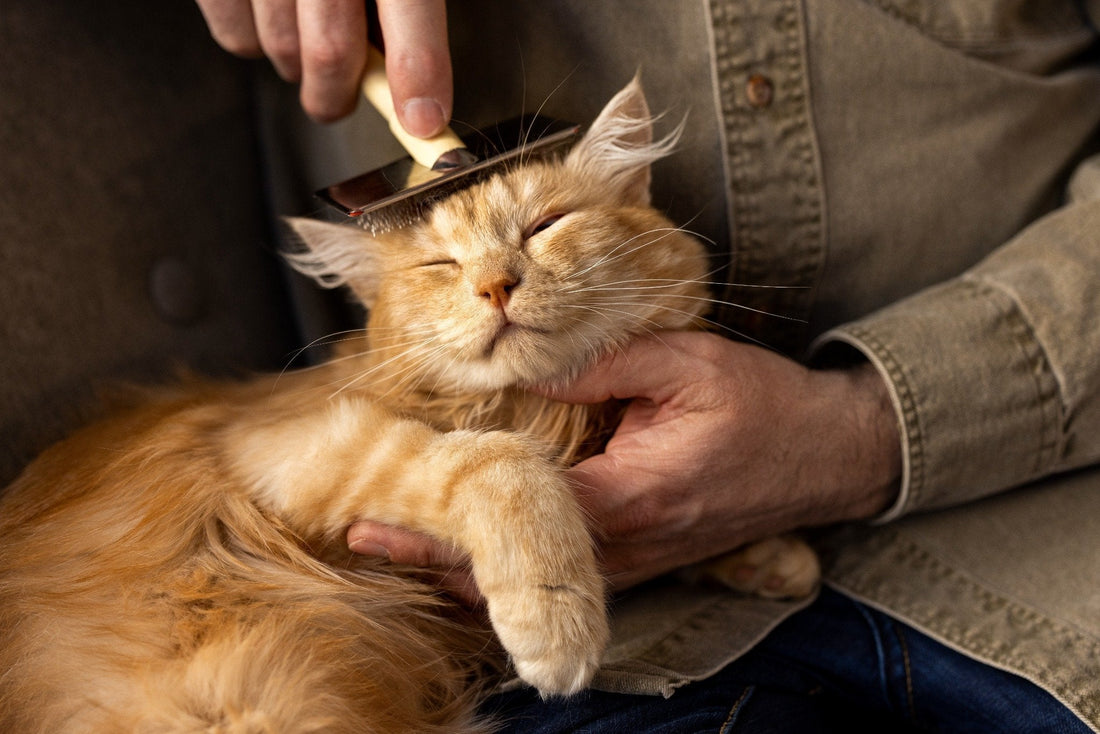
🐾 Cat Grooming Tips: Brushing, Nail Clipping & Bathing Made Easy
Share
Cats are known for their self-grooming superpowers — but even the most fastidious felines sometimes need a helping paw 🐾. Regular grooming keeps your cat’s coat shiny, prevents matting, reduces hairballs, and strengthens your bond.
Whether your cat is a sleek short-haired tabby or a fluffy Maine Coon, a consistent grooming routine ensures they look (and feel) their best. In this guide, we’ll cover everything from brushing and nail clipping to safe, calm bath time — all with tips that actually work at home.
1. Brushing: The Secret to a Silky Coat ✨
Brushing isn’t just about looking pretty — it’s essential for your cat’s health and comfort.
🪮 Why brushing matters
-
Removes dirt, loose hair, and tangles
-
Distributes natural oils for a healthy coat
-
Reduces shedding and hairballs
-
Builds trust and relaxation between you and your cat
🐈 How often should you brush?
-
Short-haired cats: 1–2 times a week
-
Medium to long-haired cats: Every 1–2 days
🧤 Grooming tip:
Start gently! Use a soft-bristle brush or a grooming glove and always follow the direction of hair growth. If your cat fidgets, try short sessions with treats in between.
👉 Pro tip: Never brush too hard — cats have sensitive skin under all that fluff!
2. Nail Clipping: Keep the Claws Under Control 🐾
Cats use their claws for climbing, stretching, and play — but overgrown nails can cause pain or damage furniture.
✂️ What you’ll need
-
Cat-specific nail clippers or grinders
-
A towel (for gentle restraint)
-
Treats (for positive reinforcement)
🐾 Step-by-step guide
-
Choose a quiet, calm space.
-
Hold your cat comfortably in your lap or wrapped in a towel.
-
Gently press each paw pad to extend the claw.
-
Trim just the sharp white tip — never cut the pink “quick”, as it contains nerves and blood vessels.
-
Reward with praise and a treat.
💡 Tip: If your cat absolutely hates nail clipping, start by trimming just one paw at a time over several days. Patience pays off!
3. Bathing: When & How to Bathe Your Cat 🚿
Most cats don’t need frequent baths — but sometimes, life happens (muddy paws, fleas, or sticky fur!).
🧴 When to bathe your cat
-
If they’ve rolled in something smelly or sticky
-
If they have a skin condition or flea issue (as advised by your vet)
-
For long-haired cats prone to oil buildup
🛁 How to make bath time stress-free
-
Fill the tub or sink with 2–3 inches of lukewarm water.
-
Use a cat-safe shampoo (never human shampoo).
-
Gently wet your cat, avoiding the face and ears.
-
Massage shampoo in slowly — talk soothingly!
-
Rinse thoroughly and wrap in a warm towel.
-
Reward your cat with affection and a small treat.
🐱 Pro tip: Use a detachable shower head or a cup for better control during rinsing.
4. Bonus Grooming Tips 💡
-
Wipe your cat’s eyes and ears with a soft, damp cloth weekly.
-
Check for fleas, bumps, or skin irritations while grooming.
-
Keep brushes and tools clean after every session.
-
Use grooming sessions as a calm bonding time — talk softly, reward often.
FAQs About Cat Grooming
Q1: Can I use baby shampoo for my cat?
No. Always use cat-specific shampoos — they’re pH-balanced for feline skin.
Q2: What if my cat hates being brushed?
Start slow. Let them sniff the brush, and reward any positive interaction. You can also try grooming gloves.
Q3: How do I reduce hairballs?
Regular brushing and a high-fibre cat food help minimize hairball formation.
Conclusion ✨
Grooming your cat doesn’t have to be a battle — it can become a calm, bonding ritual that your feline might even enjoy. With regular brushing, careful nail clipping, and the occasional bath, you’ll keep your cat looking fabulous and feeling fantastic.
